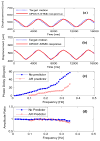A surface topology and motion compensation system for microsurgery guidance and intervention based on common-path optical coherence tomography
- PMID: 19497807
- PMCID: PMC2846755
- DOI: 10.1109/TBME.2009.2024077
A surface topology and motion compensation system for microsurgery guidance and intervention based on common-path optical coherence tomography
Abstract
A surface topology and motion compensation system for microsurgery guidance and intervention is developed based on common-path optical coherence tomography. A 1-D erosion-based edge-searching method and autoregressive predictor are applied to A-scan data for real-time depth tracking. Images using the topology and motion compensation technique are obtained. In addition, the motion compensation properties are studied. The system can be easily integrated with microsurgery tools and can be used for various clinical applications.
Figures







References
-
- Bouma BE, Tearney GJ. Handbook of Optical Coherence Tomography. Marcel Dekker Inc; NY: 2001. pp. 613–647.
-
- Jafri MS, Tang R, Tang C-M. Optical coherence tomography guided neurosurgical procedures in small rodents. J Neuroscience Methods. 2009 Jan;176:85–95. - PubMed
-
- Low A, Tearney G, Bouma B, Jang I. Technology insight: optical coherence tomography—current status and future development. Nat Clin Pract Cardiovasc Med. 2006 March;3:154–162. - PubMed
-
- Boppart SA, Brezinski ME, Pitris C, Fujimoto JG. Optical Coherence Tomography for Neurosurgical Imaging of Human Intracortical Melanoma. Neurosurgery. 1998 Oct;43:834–841. - PubMed
MeSH terms
Grants and funding
LinkOut - more resources
Full Text Sources
Other Literature Sources

